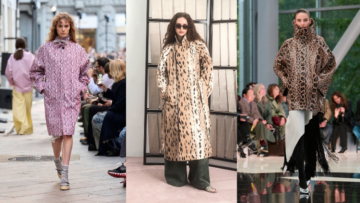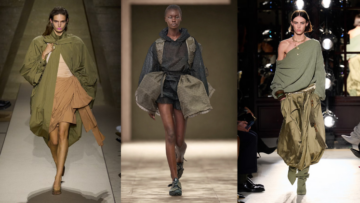 The competition in all market segments is getting fiercer by the day, so much so that many luxury retailers are leaving no stone unturned in pleasing their consumer base through various in-store services, as experience becomes almost as important as the product. Harrods ‘by appointment’ personal shopping service offered in its London store, opens the consumers to another world where the stores personal shopping team track down a specific piece of fine jewellery, host a private in-store runway show and organize a one-on-one fitting session with a designer. At Louis Vuitton, the luxury brand’s highest-spending customers are invited to exclusive events and offered all-expense paid trips to the labels runway shows by being escorted by their own dedicated salesperson. Another retailer offering such services is Lane Crawford, whose personal shoppers can arrange anything from hotel booking to makeup artists. Whereas in Harvey Nichols, the personal shopping suite has a shower room, so that customers can wear their purchase the same night.
The competition in all market segments is getting fiercer by the day, so much so that many luxury retailers are leaving no stone unturned in pleasing their consumer base through various in-store services, as experience becomes almost as important as the product. Harrods ‘by appointment’ personal shopping service offered in its London store, opens the consumers to another world where the stores personal shopping team track down a specific piece of fine jewellery, host a private in-store runway show and organize a one-on-one fitting session with a designer. At Louis Vuitton, the luxury brand’s highest-spending customers are invited to exclusive events and offered all-expense paid trips to the labels runway shows by being escorted by their own dedicated salesperson. Another retailer offering such services is Lane Crawford, whose personal shoppers can arrange anything from hotel booking to makeup artists. Whereas in Harvey Nichols, the personal shopping suite has a shower room, so that customers can wear their purchase the same night.
There is no denying that first impressions count and appearances have become more important than ever, more so now that people are taking keen interest in the way they look and behave. Times are such that stylists are not just restricted to celebrities, rather they are available to everyone through personal shopping services. While for a consumer, these service offer opportunities for styling with expert advice, for the brands, it perpetuates increase in sales with improving customer services in an increasingly competitive market. Taking personal shopping to the next level, most luxury brands have an in-house team of personal shoppers, while various apps are also scaling this service further.
These personal shopping services apart from providing styling services can help complete their clients shopping list, open a store after hours and even host a birthday party. The strategy behind putting these services, such as dedicated staff, private lounges, etc. though accompanied by major investments has the potential to grab a customer’s attention towards products and enhance the whole shopping experience, leading to more spending.
“The personal shopping experience can increase sales by almost 100 per cent on average. Imagine a person going into a store to buy a new skirt; personal shopping can turn that skirt into an outfit,” reveals Marshal Cohen, Chief Industry Analyst, NPD Group. At Lane Crawford stores, this push is higher as over 50 per cent of sales are made by personal shoppers in its Shanghai store.
 Personal shopping strategy workers for various brands, as the increasing exposure to products allow the customer during a personal shopping appointment to be introduced to more products, which they would otherwise not consider. Also, the personal shoppers curate the experience according to the customer’s need by finding products based on the client’s budget, tastes and occasion for which they are shopping. Most importantly, personal shoppers can seep through the psyche of a customer by becoming a sales person, confidant and a trusted second opinion. Giving this service a major push is the increasingly crowded and competitive luxury market, where personal shopping has an ability to engage customers, boost client loyalty and increase conversion rates.
Personal shopping strategy workers for various brands, as the increasing exposure to products allow the customer during a personal shopping appointment to be introduced to more products, which they would otherwise not consider. Also, the personal shoppers curate the experience according to the customer’s need by finding products based on the client’s budget, tastes and occasion for which they are shopping. Most importantly, personal shoppers can seep through the psyche of a customer by becoming a sales person, confidant and a trusted second opinion. Giving this service a major push is the increasingly crowded and competitive luxury market, where personal shopping has an ability to engage customers, boost client loyalty and increase conversion rates.
 In the past few years, these services have trickled down from the luxury sector to the mass market also, where consumer spending is restricted and brand loyalty is often changing. Owing to this change, high street retailer Topshop opened its first personal shopping suite over five years ago in response to the increasing demand for the store’s ‘Style Advisor’ services. “This is particularly important for companies targeting millennials. Providing additional services and a unique brand experience will help promote loyalty among a consumer base that is renowned for its fickleness,” informs Bernadette Kissane, Apparel and Footwear Associate, Euromonitor International.
In the past few years, these services have trickled down from the luxury sector to the mass market also, where consumer spending is restricted and brand loyalty is often changing. Owing to this change, high street retailer Topshop opened its first personal shopping suite over five years ago in response to the increasing demand for the store’s ‘Style Advisor’ services. “This is particularly important for companies targeting millennials. Providing additional services and a unique brand experience will help promote loyalty among a consumer base that is renowned for its fickleness,” informs Bernadette Kissane, Apparel and Footwear Associate, Euromonitor International.
 Apps further push trend of personal shoppers…
Apps further push trend of personal shoppers…
Growing in popularity the personalised service trend is also taking the online world by a storm, as various apps have flooded this space as the trend shows future scope for growth and progress. One such being PS Dept., which was founded in 2011 and currently employs a fleet of personal shoppers who constantly scout for products for its clients from more than 10,000 sales associates at over 100 retail partners, from Net-a-Porter and Chloé, to multi-brand boutiques like The Webster and Hirshleifers. Currently, PS Dept. handles an average of 5,600 shopping requests a month, up from 2,100 at the end of 2014 and the average order value is about US $ 800, while the company’s customer retention rate is 68 per cent over an 18-month period. Among other, London-based startup that focuses on mid-priced men’s fashion has a loyal customer base of 250,000 with its average shopping cart of US $ 213.
I ncreasingly, the rise of personal shopping services is due to shifting consumer shopping habits, huge disposable income and the customer experience that comes with it. Today’s item-driven era is providing scope for such services to thrive as customers continue to become less loyal to specific brands and are becoming obsessed with a particular product within the brand’s collection, such as the Gucci Loafers that are a rage on the personal shopping service apps. Touted as ‘time savers’ and ‘miracle makers’ these personal shoppers are becoming a rage in the market, being welcomed by not just the customers, but also most importantly by the brands as well.
ncreasingly, the rise of personal shopping services is due to shifting consumer shopping habits, huge disposable income and the customer experience that comes with it. Today’s item-driven era is providing scope for such services to thrive as customers continue to become less loyal to specific brands and are becoming obsessed with a particular product within the brand’s collection, such as the Gucci Loafers that are a rage on the personal shopping service apps. Touted as ‘time savers’ and ‘miracle makers’ these personal shoppers are becoming a rage in the market, being welcomed by not just the customers, but also most importantly by the brands as well.






